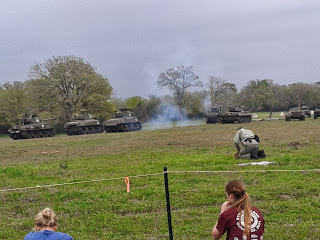Last year I lived in Poland. Since I was there for the full year I had plenty of time to travel the country and visit places so I took advantage of the cheap train tickets and crisscrossed the country. One of the places I went to was a little town about an hour away from Kraków called Oświęcim.


Its a cute little town. One warning though, the bus stations is on the opposite side of town from the train station. I arrived there by bus and needed to meet us with some other people who were arriving by train. Instead of buying a ticket for the city buses I decided to walk, it ended up being a 7 or 8 km walk across the city.
When Poland was under German occupation in World War II Oświęcim was known by its German name Auschwitz.
The city had contained a polish munitions barracks before the war and when the Nazi's arrived they decided these barracks would be the perfect site for a concentration camp. Local townspeople were forced to help turn the barracks into a camp. They added a second floor the already exists soldier's living quarters and when they finished they were then imprisoned there. Inside the building were remnants of what had happened there.
Zyklon B canisters.
Eyeglasses, prosthetic legs, and suitcases taken from people sent to Auschwitz. Items taken from prisoners were sent a part of the camp known commonly as Canada (canada was considered the land of plenty). Prisoners that worked in Canada generally were better off than others and there was the opportunity take items (such as food and other needed supplies). One room contained a case full of human hair. The Nazis would cut off the hair of those sent to Auschwitz and then used it to make fabric. Upon seeing the suitcases and the hair some of the people in the group I was with started to cry.
Ink that was used to tattoo identification tattoos on prisoners arms. Auschwitz was both a concentration camp and a death camp. In a concentration camp the prisoners are recorded. In the death camps, those sent there were not recorded at all, instead they were sent straight to the gas chambers.
Identification symbols for the prisoners
Gestapo Court
Prisoners would have their hands tied behind their back and then they would be hung by them from these posts as punishment.
Wall were firing squad occured.
Rudolf Höss's house and the gallows he was hung from after the war.
Inside of a gas chamber and the hole the zyklon b was dropped into
Crematoria
Auschwitz I was considered to small for the plans the Nazis had so they demolished the houses in nearby villages in built Auschwitz II/Birkenau over the remains.
Remains of the crematoria/gas chambers. When it became obvious they would loose war, the nazis blew up the gas chambers in an attempt to cover up any evidence of what they did.
Inside of prisoners living space. There is absolutely no insulation.
Toilets. Prisoners were give only 10 -30 seconds to use the restroom.
Auschwitz is a very emotional place. The Birkenau part especially has an eerie feel to it. Just standing there you feel that something terrible has occured in that place. When walking through there is hard to imagine that thousands of people stood in the very same place, suffering terribly.


















































